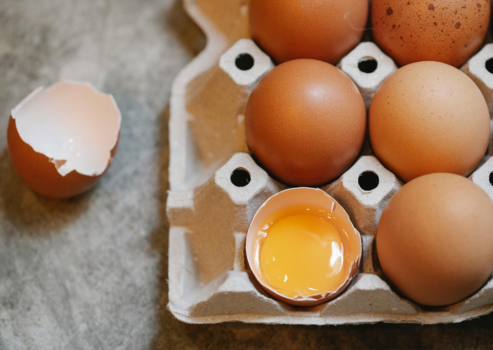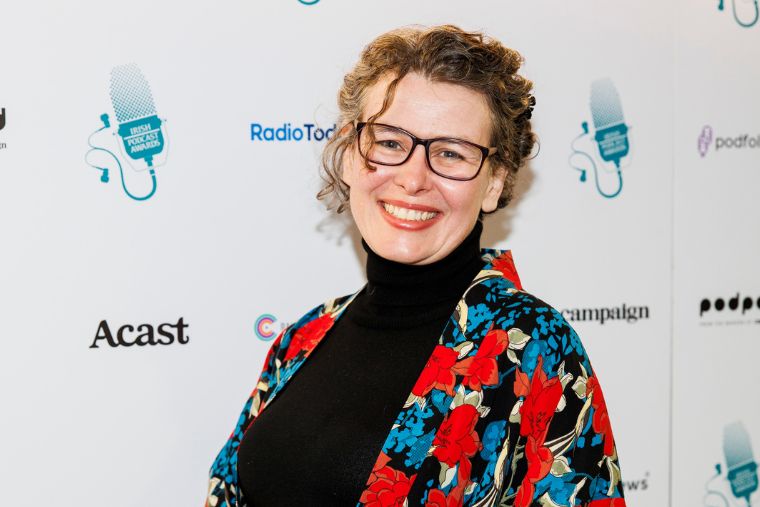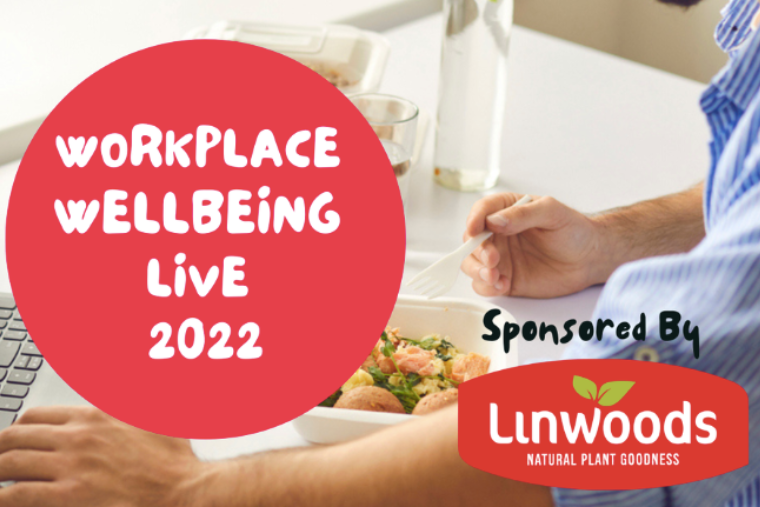Share on social

What’s All The Fuss Around Protein?
Thursday 31 July 2025
.png?lang=en-GB&ext=.png)
Are you eating enough protein? If you’re dealing with chronic fatigue, brain fog, hormonal imbalances, or slow recovery, the answer might be no.
So why is protein such a big deal? Why does it need to be consumed daily, and in the right amounts?
Let’s break it down.
When you eat protein, your body breaks it down into amino acids during digestion. These amino acids are then absorbed and reassembled into whatever your body needs at the time — from enzymes and hormones to collagen and muscle fibres.
Amino acids — the building blocks of life. Of the 20 amino acids our bodies use, 9 are classified as essential, meaning we cannot produce them ourselves. We must get them from food.
These amino acids are critical for nearly every biological function — not just for building muscle. Our DNA, hormones, enzymes, neurotransmitters, immune messengers, and of course, our muscles and connective tissues all depend on protein.
Here’s something most people don’t realise: your body is constantly rebuilding itself. In fact, on a cellular level, you become an entirely new person roughly every 7 to 10 years. Your gut lining renews every 4 to 5 days, your skin every 40 to 56 days, and your entire skeleton is replaced about every 10 years. To support this continual renewal, your body needs a consistent, daily supply of amino acids — which means enough protein, every single day.
And here’s the catch: unlike carbohydrates (stored as glycogen) or fat (stored in fat cells), amino acids aren’t stored in the body. If you don’t consume enough protein regularly, your body doesn’t have the raw materials it needs to maintain, repair, and regenerate tissue — especially when you're already dealing with stress, inflammation, or chronic illness.
I often tell my clients: it’s like trying to build a house with cracked or missing bricks. You may still end up with a structure, but it won’t be as strong or resilient as it should be.
It’s not just about how much protein you eat — it’s also about what kind. We need complete proteins, meaning proteins that contain all 9 essential amino acids.
Animal-based proteins (meat, fish, eggs, dairy) provide all of these in one go. Plant-based proteins like lentils and beans are excellent — but they usually lack one or more essential amino acids. That’s why variety and smart combinations are key, especially if you follow a vegetarian or vegan diet.
Take lentils, for example. They’re low in the essential amino acid methionine. To fill the gap, pair them with foods rich in methionine like whole grains (e.g., rice, oats, quinoa) or seeds (e.g., sunflower or sesame). This way, you’re creating a complete amino acid profile over the course of the day.
Some common signs you might not be getting enough protein include:
• Frequent fatigue or weakness
• Poor concentration or brain fog
• Brittle nails and hair loss
• Slow wound healing
• Frequent infections or poor immunity
• Muscle loss or poor recovery after exercise
• Mood swings or low motivation
Here’s where things get even more interesting — and where many people with chronic conditions often miss a key piece of the puzzle.
Protein is essential for neurotransmitter production. Take dopamine, for example — a neurotransmitter that plays a key role in focus, motivation, and mood. Individuals with ADHD often have low dopamine levels, and dopamine is made from the amino acid tyrosine. If someone isn’t getting enough protein, their symptoms may worsen simply because the body lacks the raw materials needed to produce enough dopamine.
The same principle applies to hormones. During transitional phases like perimenopause and post-menopause, the body leans heavily on amino acids to support hormonal balance. Without adequate protein, this transition can feel even more challenging.
And let’s not forget the immune system. Immune cells, antibodies, and signalling molecules like cytokines are all made from amino acids. Without enough protein, your immune response may weaken — making it harder to fight infections or recover from illness.
So, How Much Protein Do You Actually Need?
Your protein needs depend on several factors — including your age, activity level, overall health, and whether you're pregnant or recovering from illness. What many people don’t realise is that our protein requirements actually increase as we age, since the body needs more support for ongoing repair and regeneration.
As a general guide:
• Aim for around 30 grams of protein per meal — at breakfast, lunch, and dinner.
• For a more precise estimate, most people need at least 0.8 grams of protein per kilogram of body weight per day.
• If you’re active, doing strength training, or over the age of 60, your needs may increase to 1.2–2.0 grams per kilogram.
To help visualise this:
• One medium egg contains around 6–7 grams of protein.
• One cup of cooked lentils provides approximately 18 grams.
• A 100-gram chicken breast delivers about 31 grams of protein.
A simple rule of thumb I often share with clients is to aim for a palm-sized portion of protein at each main meal. This helps ensure a steady, daily supply of amino acids to support energy levels, tissue repair, hormone production, and overall well-being.
Best Sources of Complete Protein
Animal-based (contain all essential amino acids):
• Grass-fed beef or lamb
• Organic, free-range chicken
• Wild-caught fish
• Eggs
• Dairy (e.g., Greek yogurt, cottage cheese)
Plant-based complete proteins:
• Tofu
• Quinoa
• Amaranth
• Buckwheat
• Chia seeds
• Hemp seeds
Other plant proteins like lentils, beans, chickpeas, and nuts are incredibly nutritious, but not complete on their own. With proper rotation and combining — like lentils with rice or hummus with whole grain bread — you can still meet your amino acid needs as a vegetarian or vegan.
Getting enough high-quality protein every day isn’t just about strength or fitness — it’s about giving your body the tools it needs to heal, function, and thrive. Especially if you're managing chronic stress or illness, protein is non-negotiable.
Reference list
Baum, J., Kim, I.-Y. and Wolfe, R. (2016). Protein Consumption and the Elderly: What Is the Optimal Level of Intake? Nutrients, [online] 8(6).
Koster, M.I. (2009). Making an epidermis. Annals of the New York Academy of Sciences, [online] 1170, pp.7–10.
Lopez, M.J. and Mohiuddin, S.S. (2024). Biochemistry, Essential Amino Acids. [online] PubMed. Available at: https://www.ncbi.nlm.nih.gov/books/NBK557845/.
Meiser, J., Weindl, D. and Hiller, K. (2013). Complexity of dopamine metabolism. Cell Communication and Signaling, [online] 11(1), p.34.
Office of the Surgeon General (2004). The Basics of Bone in Health and Disease. [online] Nih.gov.
van der Flier, L.G. and Clevers, H. (2009). Stem Cells, Self-Renewal, and Differentiation in the Intestinal Epithelium. Annual Review of Physiology, 71(1), pp.241–260.
Wu, G. (2016). Dietary Protein Intake and Human Health. Food & Function, [online] 7(3), pp.1251–1265.
So why is protein such a big deal? Why does it need to be consumed daily, and in the right amounts?
Let’s break it down.
When you eat protein, your body breaks it down into amino acids during digestion. These amino acids are then absorbed and reassembled into whatever your body needs at the time — from enzymes and hormones to collagen and muscle fibres.
Amino acids — the building blocks of life. Of the 20 amino acids our bodies use, 9 are classified as essential, meaning we cannot produce them ourselves. We must get them from food.
These amino acids are critical for nearly every biological function — not just for building muscle. Our DNA, hormones, enzymes, neurotransmitters, immune messengers, and of course, our muscles and connective tissues all depend on protein.
Here’s something most people don’t realise: your body is constantly rebuilding itself. In fact, on a cellular level, you become an entirely new person roughly every 7 to 10 years. Your gut lining renews every 4 to 5 days, your skin every 40 to 56 days, and your entire skeleton is replaced about every 10 years. To support this continual renewal, your body needs a consistent, daily supply of amino acids — which means enough protein, every single day.
And here’s the catch: unlike carbohydrates (stored as glycogen) or fat (stored in fat cells), amino acids aren’t stored in the body. If you don’t consume enough protein regularly, your body doesn’t have the raw materials it needs to maintain, repair, and regenerate tissue — especially when you're already dealing with stress, inflammation, or chronic illness.
I often tell my clients: it’s like trying to build a house with cracked or missing bricks. You may still end up with a structure, but it won’t be as strong or resilient as it should be.
It’s not just about how much protein you eat — it’s also about what kind. We need complete proteins, meaning proteins that contain all 9 essential amino acids.
Animal-based proteins (meat, fish, eggs, dairy) provide all of these in one go. Plant-based proteins like lentils and beans are excellent — but they usually lack one or more essential amino acids. That’s why variety and smart combinations are key, especially if you follow a vegetarian or vegan diet.
Take lentils, for example. They’re low in the essential amino acid methionine. To fill the gap, pair them with foods rich in methionine like whole grains (e.g., rice, oats, quinoa) or seeds (e.g., sunflower or sesame). This way, you’re creating a complete amino acid profile over the course of the day.
Some common signs you might not be getting enough protein include:
• Frequent fatigue or weakness
• Poor concentration or brain fog
• Brittle nails and hair loss
• Slow wound healing
• Frequent infections or poor immunity
• Muscle loss or poor recovery after exercise
• Mood swings or low motivation
Here’s where things get even more interesting — and where many people with chronic conditions often miss a key piece of the puzzle.
Protein is essential for neurotransmitter production. Take dopamine, for example — a neurotransmitter that plays a key role in focus, motivation, and mood. Individuals with ADHD often have low dopamine levels, and dopamine is made from the amino acid tyrosine. If someone isn’t getting enough protein, their symptoms may worsen simply because the body lacks the raw materials needed to produce enough dopamine.
The same principle applies to hormones. During transitional phases like perimenopause and post-menopause, the body leans heavily on amino acids to support hormonal balance. Without adequate protein, this transition can feel even more challenging.
And let’s not forget the immune system. Immune cells, antibodies, and signalling molecules like cytokines are all made from amino acids. Without enough protein, your immune response may weaken — making it harder to fight infections or recover from illness.
So, How Much Protein Do You Actually Need?
Your protein needs depend on several factors — including your age, activity level, overall health, and whether you're pregnant or recovering from illness. What many people don’t realise is that our protein requirements actually increase as we age, since the body needs more support for ongoing repair and regeneration.
As a general guide:
• Aim for around 30 grams of protein per meal — at breakfast, lunch, and dinner.
• For a more precise estimate, most people need at least 0.8 grams of protein per kilogram of body weight per day.
• If you’re active, doing strength training, or over the age of 60, your needs may increase to 1.2–2.0 grams per kilogram.
To help visualise this:
• One medium egg contains around 6–7 grams of protein.
• One cup of cooked lentils provides approximately 18 grams.
• A 100-gram chicken breast delivers about 31 grams of protein.
A simple rule of thumb I often share with clients is to aim for a palm-sized portion of protein at each main meal. This helps ensure a steady, daily supply of amino acids to support energy levels, tissue repair, hormone production, and overall well-being.
Best Sources of Complete Protein
Animal-based (contain all essential amino acids):
• Grass-fed beef or lamb
• Organic, free-range chicken
• Wild-caught fish
• Eggs
• Dairy (e.g., Greek yogurt, cottage cheese)
Plant-based complete proteins:
• Tofu
• Quinoa
• Amaranth
• Buckwheat
• Chia seeds
• Hemp seeds
Other plant proteins like lentils, beans, chickpeas, and nuts are incredibly nutritious, but not complete on their own. With proper rotation and combining — like lentils with rice or hummus with whole grain bread — you can still meet your amino acid needs as a vegetarian or vegan.
Getting enough high-quality protein every day isn’t just about strength or fitness — it’s about giving your body the tools it needs to heal, function, and thrive. Especially if you're managing chronic stress or illness, protein is non-negotiable.
Reference list
Baum, J., Kim, I.-Y. and Wolfe, R. (2016). Protein Consumption and the Elderly: What Is the Optimal Level of Intake? Nutrients, [online] 8(6).
Koster, M.I. (2009). Making an epidermis. Annals of the New York Academy of Sciences, [online] 1170, pp.7–10.
Lopez, M.J. and Mohiuddin, S.S. (2024). Biochemistry, Essential Amino Acids. [online] PubMed. Available at: https://www.ncbi.nlm.nih.gov/books/NBK557845/.
Meiser, J., Weindl, D. and Hiller, K. (2013). Complexity of dopamine metabolism. Cell Communication and Signaling, [online] 11(1), p.34.
Office of the Surgeon General (2004). The Basics of Bone in Health and Disease. [online] Nih.gov.
van der Flier, L.G. and Clevers, H. (2009). Stem Cells, Self-Renewal, and Differentiation in the Intestinal Epithelium. Annual Review of Physiology, 71(1), pp.241–260.
Wu, G. (2016). Dietary Protein Intake and Human Health. Food & Function, [online] 7(3), pp.1251–1265.
Author Atoosa Sepehr (mBANT, mCNHG), Founder & Nutritional Therapist at Atoosa Sepehr Nutrition
Thursday 31 July 2025



 Contact us
Contact us
 Share on social
Share on social Share with a friend
Share with a friend Facebook
Facebook LinkedIn
LinkedIn
 Twitter
Twitter




















 Get in touch with us
Get in touch with us